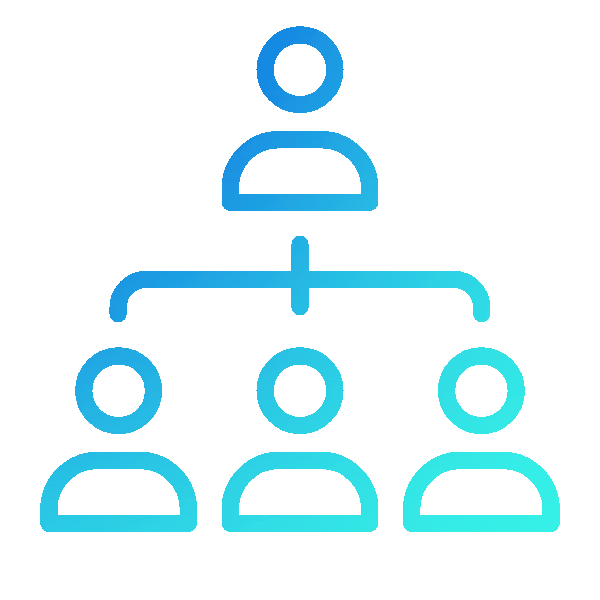Peter Rose, CTO of TEKenable, joins our podcast to discuss the growing demand for low code software development in the technology market.
The Guest – Peter Rose, Owner & CTO at TEKenable
Peter founded TEKenable with Nick Connors in 2002 to provide high-quality software solutions to Financial Services, Healthcare Services, Agri-Food companies, and the Public Sector. After 20 years in business, TEKenable has been listed in the Deloitte Fast50 3 years running, 2019, 2020 & 2021.
Additionally, Peter acts as CTO and associate CTO to several start-ups and established services companies in Ireland and EMEA. Peter is recognised as an expert in the delivery of secure, reliable software to enterprise businesses and as a trusted advisor to many Irish CEOs and CIOs.
Low Code Software Development
Using low code technologies to scale your products has many benefits, starting with the fact that it lowers the barriers for many team members besides software developers to work on shaping a product hands-on. By eliminating the need for extensive and complicated code, you can enable your product teams or business analysts to build or customize a product and cater to customer needs with no time wasted.
Some of the topics covered include:
- What is ‘Low Code’ and in what way is it changing the software industry?
- What does TEKenable do, and which problems is it solving?
- The impact of low code for the future of software jobs.
- How to stay on top of new technologies and continuously be learning.
- Learnings from scaling a business & insights for other business leaders.
Highlight:
Transcript (Abridged version):
[…]
Can you tell us about TEKenable? What do you guys do and what are some of the technology challenges you are solving?
So what we do is, run digital transformation programs for typically large enterprise businesses, but not exclusively. We use low code platforms as the means of implementing the change rapidly within that organization. So by low code platforms, I mean that we use the likes of the Microsoft Dynamics platform, Salesforce, etc. and it’s the kind of technology where instead of writing thousands or millions of lines of code – which is a hard and highly skilled process to go thorough – we use a lot of visual design tools to drag and drop business processes, to design screens and reports visually. It means we can do it much more quickly, at much lower risk, and with less effort on the part of the customer as well because they don’t have to test as much as they would’ve otherwise. The tools are really quite liberating in terms of digital transformation. You can set high ambitions in terms of how you want to change your business process, what kind of outcomes you want to achieve, and know that the tools are there to support you in doing that quickly and more efficiently. That’s how we do digital transformation.
And in what way would you say low code is changing the software sector?
Actually, what we’ve seen is that you don’t necessarily need as much software engineering – it’s low-code, not no-code to be clear. You still typically need to write some software but the vast majority of what you do in a low code system is, as I said, visual design. Because these visual design tools are much more accessible, instead of needing highly qualified and skilled software developers, you can now have somebody who perhaps traditionally wasn’t able to engage, which could be the likes of business analysts for example or even the customers’ subject matter experts. With suitable training, they can start to really get involved in actually building the systems themselves.
So the business analysts, for example, would have drawn a flowchart and presented it in a document showing you the process, but now they can help build the actual business process using the tool that describes it in the flowchart form, right? The difference is the old way of doing it was just on a piece of paper that people could read. The new way of doing it shows exactly the same thing, but it runs as well. So, it democratized the technology a little bit, it’s made it more accessible. The ability to deliver functional systems has widened. […]
Peter, I know that besides being a technology professional, you’ve been running companies. Have there been any particularly hairy moments in your career and what would be some of the things you’d have learned from those circumstances?
I suppose, possibly the biggest hairy moment was actually what caused us to set up TEKenable in the first place, which is that I worked for a company that was an internet boom and bust business. I was their CTO, and it grew rapidly to about 240 staff within two years. Unfortunately, that company didn’t have a revenue stream that was supported. It was reliant on investment and that investment was being generated by the internet bubble. So the company eventually went bankrupt. […] Nick Connors, my business partner, was actually the managing director of the Irish operations and we sort of looked at each other just before the company went bankrupt like; what are we going to do? There are no real jobs out there. We are going to have to start our own business, aren’t we?
We made a commitment to ourselves personally in selling projects to customers in this boom and bust business, and we felt a moral obligation to fulfill what we promised them. So, we approached them as the company went bankrupt. We approached these customers and said essentially your project is gone, unless you’re willing to move forward with us – in which case we’ll finish your project in the originally agreed timescale to the originally agreed scope, for whatever remaining money is in the budget. We were very lucky in that some actually agreed, and came on board and we formed a company. In a hurry, we borrowed office space from a friend of ours for free and we completed those projects. […]
It was mental toughness and resilience. What it taught us as well, in a business sense, is the value of things. I had an office on Wall Street, a desk with a plant to grow, and over my left shoulder there was the entrance to the New York Stock Exchange, which wasn’t worth it at the end of the day, it really didn’t count for anything, because the business was set up to be completely reliant on investment and that was an unsustainable chain of dependencies. So, it told us what was real and what was valuable in business, and what was just fluff and optics.
[…]
—
You can find The Story of Software podcast on:
Apple Podcasts, Spotify, Stitcher, Deezer, & any other podcast platform of your choice.
We hope you enjoy listening to this tech podcast and feel free to share any feedback with us: podcast@zartis.com
The Story of Software Podcast is produced by Zartis.




